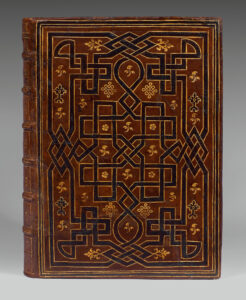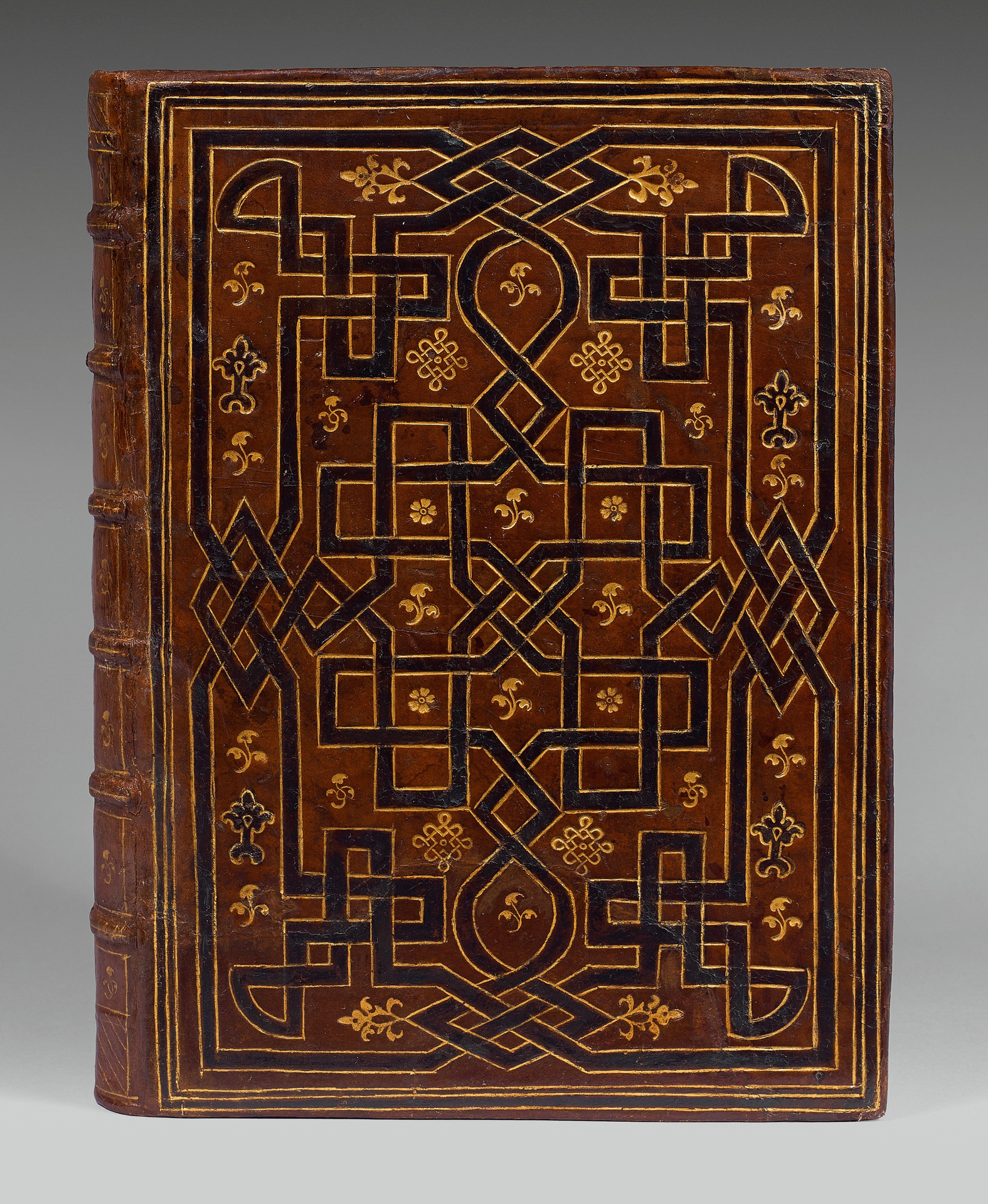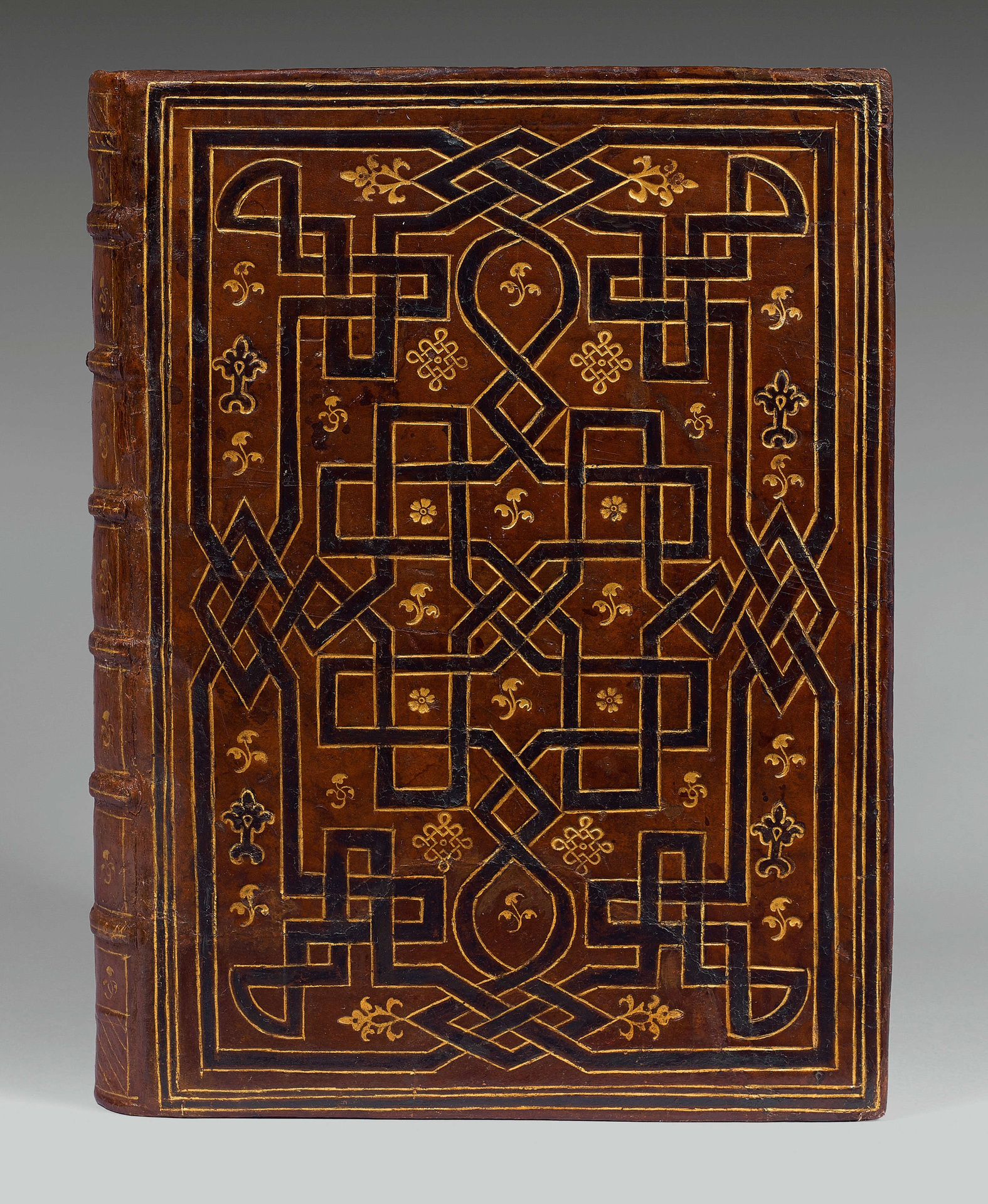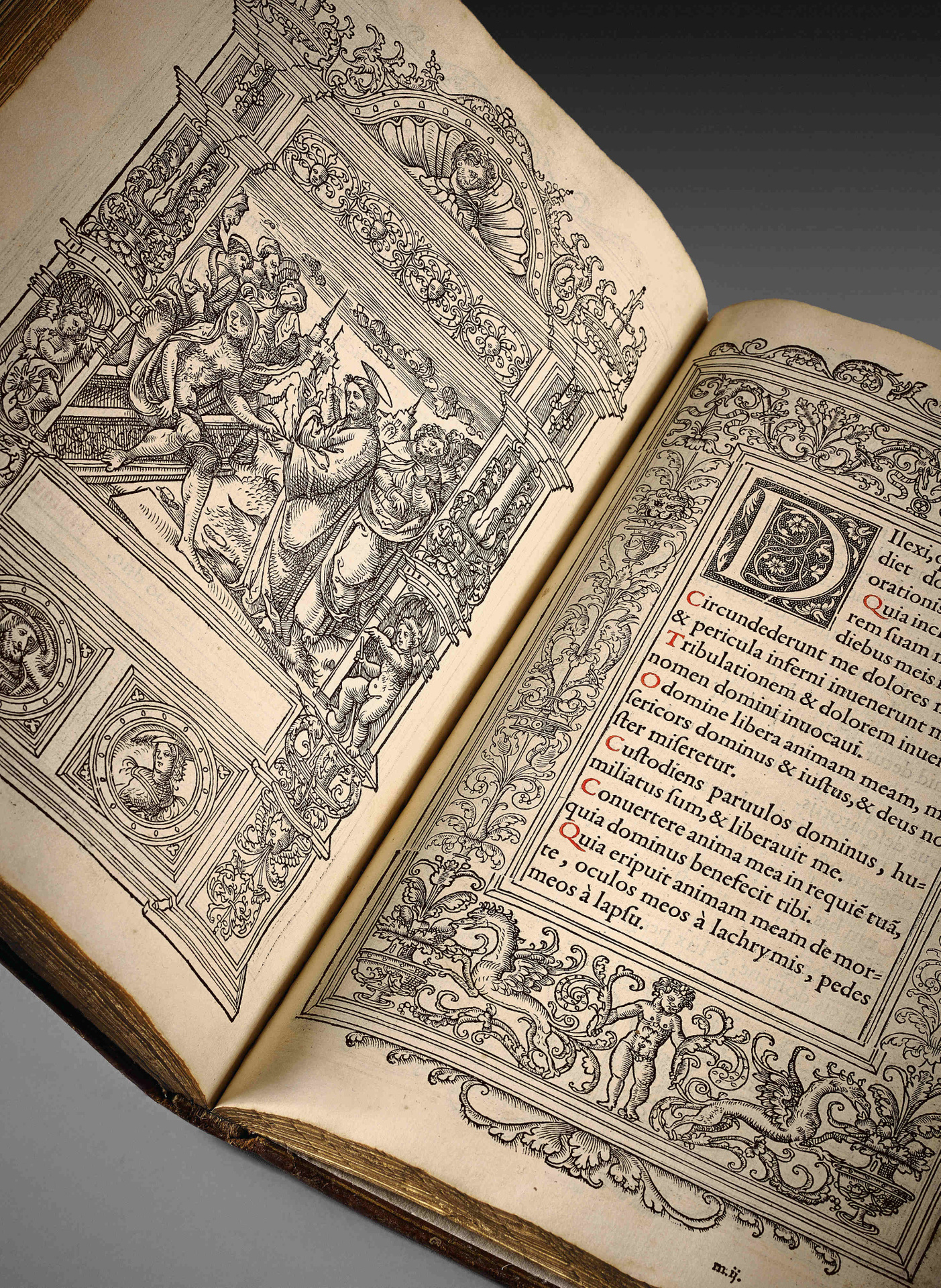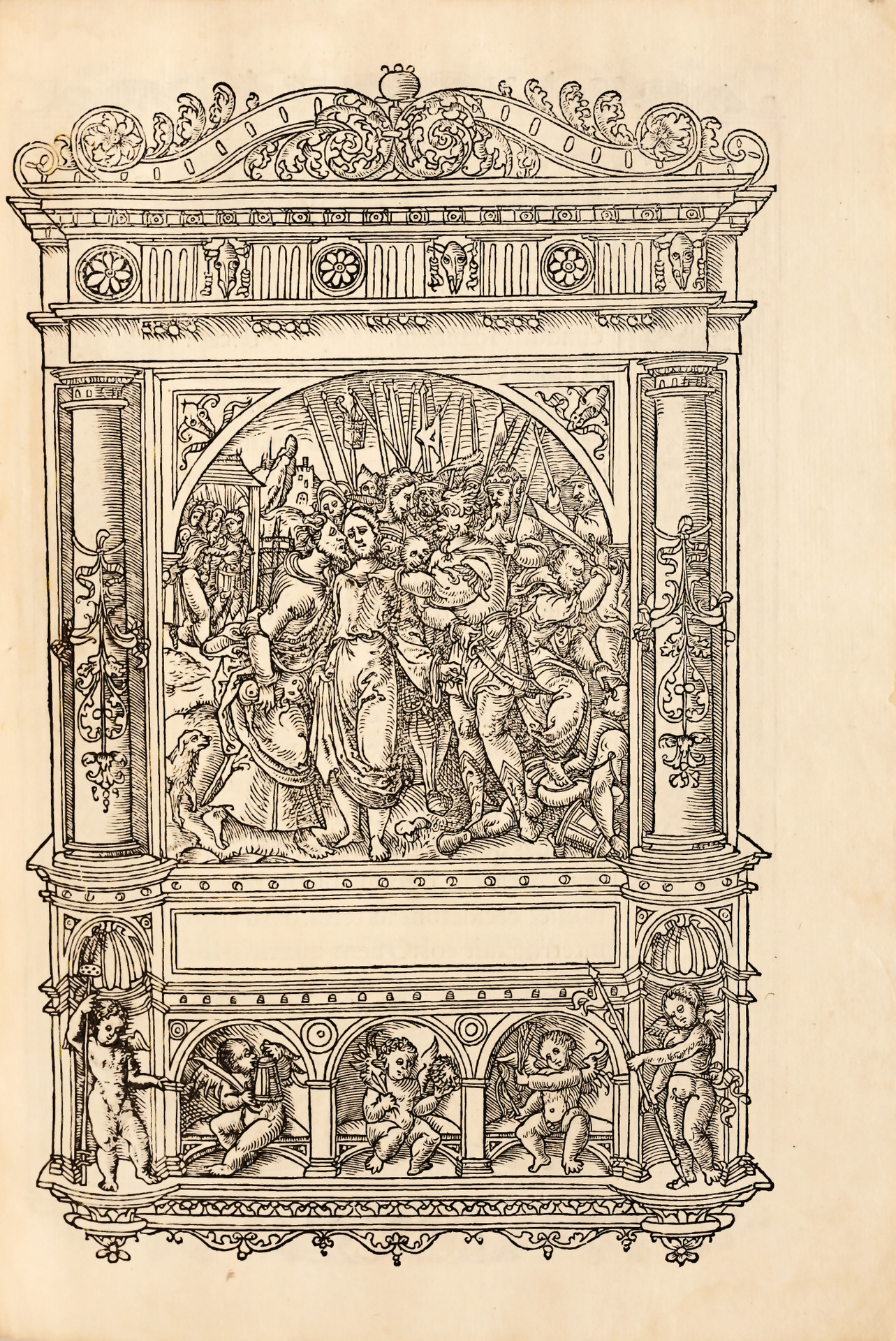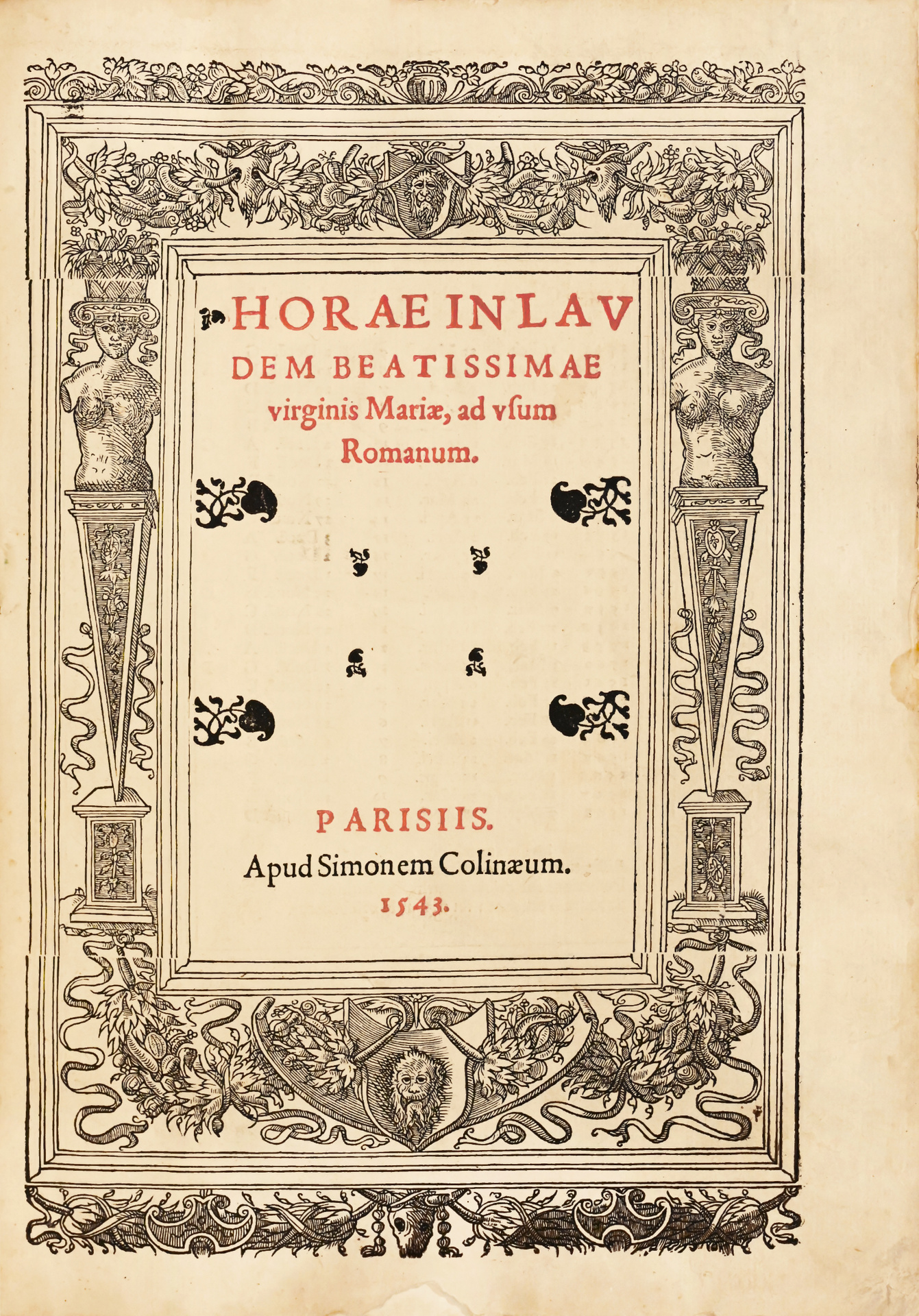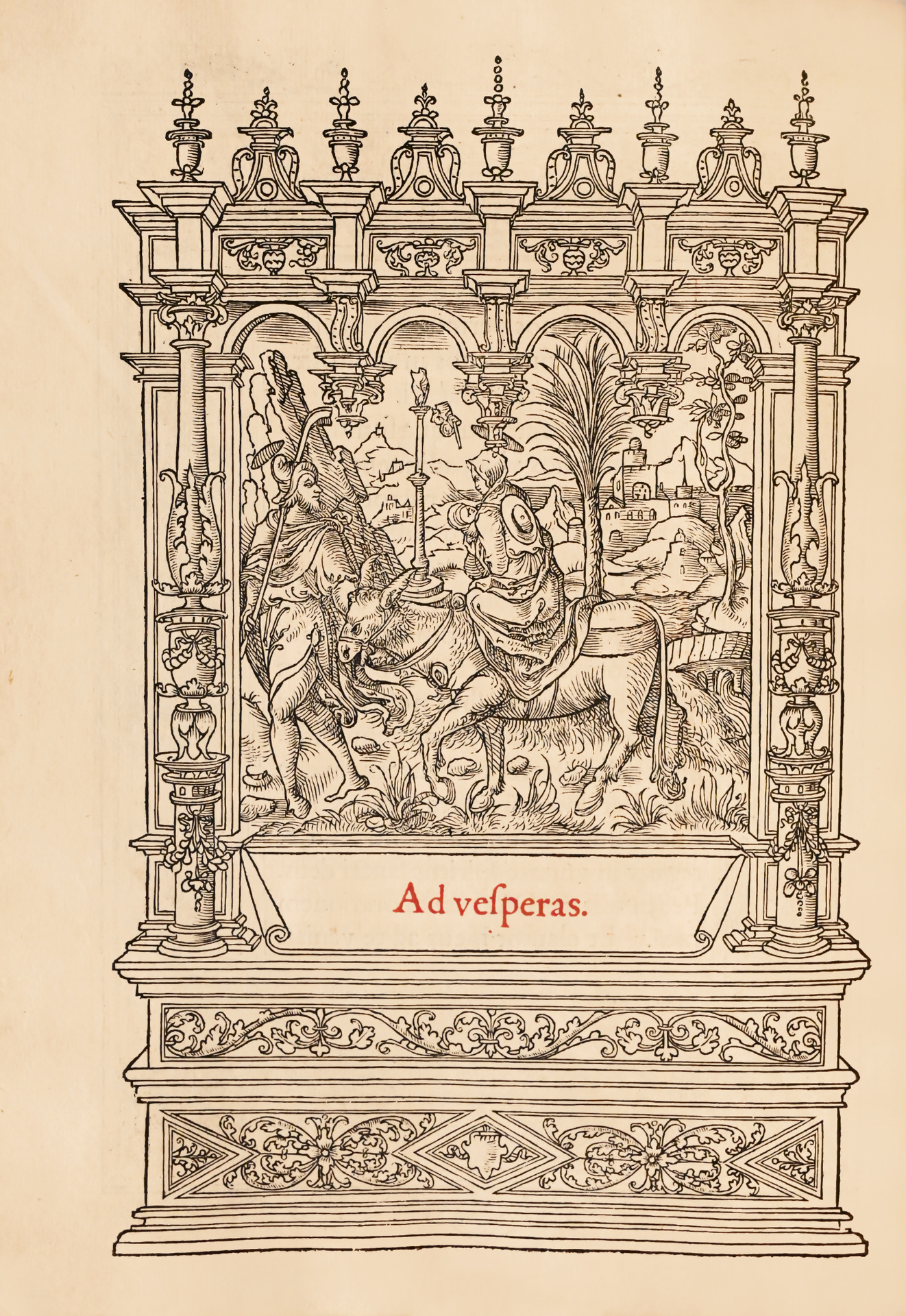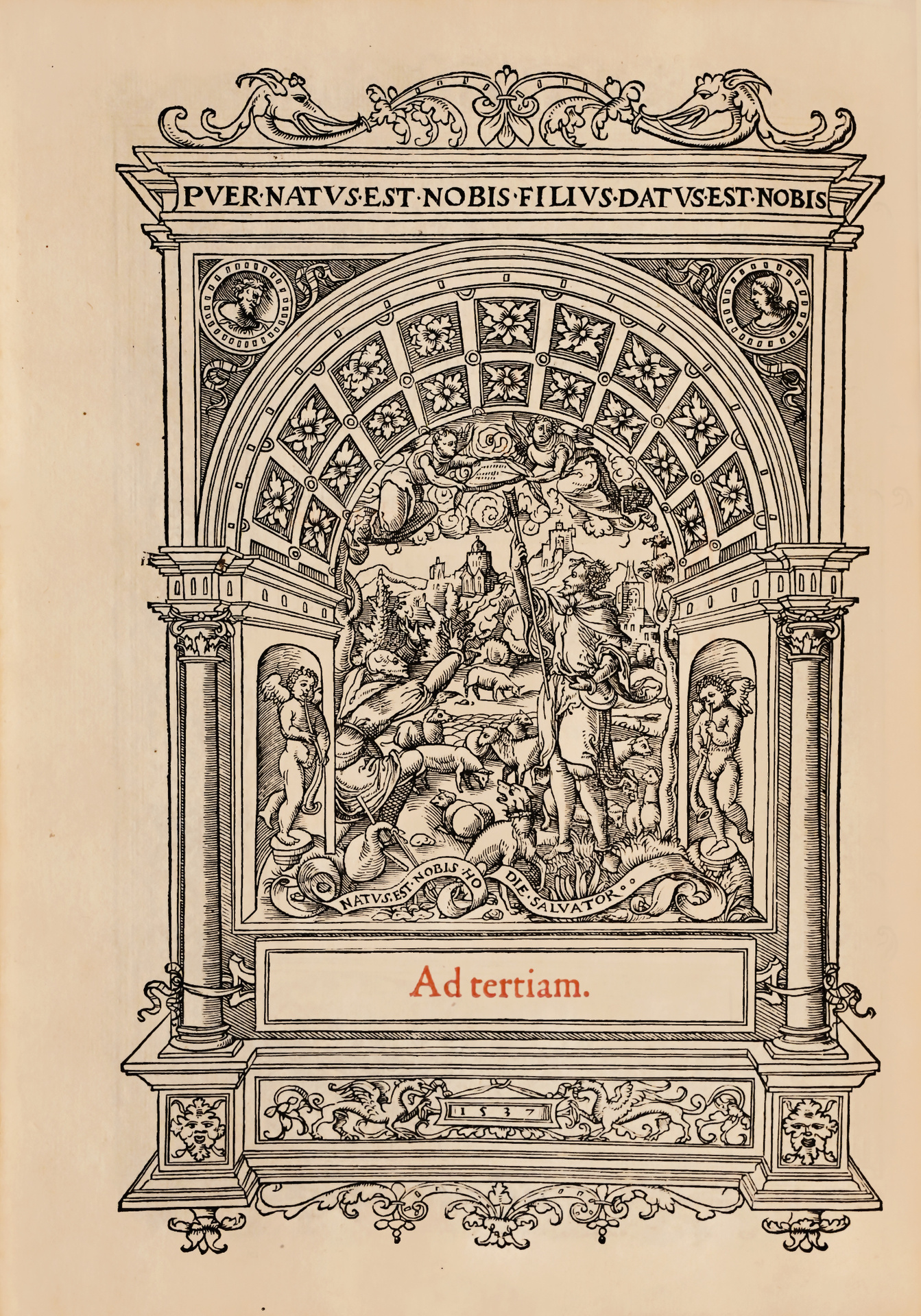Paris, Simon de Colines, 1543.
4to [233 x 164 mm] of 176 ll. (a-y8), 14 full-page engraved plates. Text printed in red and black. Almanac for 1543-1568. Printed title in an architectural frame, all the pages bordered with composite frames, 14 full-page woodcuts with architectural borders specially conceived for êch scene, and large decorated initials. Dark brown full calf, covers with a Grolier decoration made of gilt fillets, geometric tracery painted in black and gilt fleurons, spine decorated with small gilt fleurons inside the panels, gilt and chiseled edges, former restoration in the lower part of the front cover. Bookcase.
Rich contemporary binding made by one of the Parisian workshops working for Jên Grolier, the “Pecking Crow” workshop.
Harvard II, 306; Brunet, V, 1661-1662; Renouard, pp. 378-379; Rothschild, vol. 3 n° 2537; Brun p. 233, 8th ed.; Bernard pp. 209-212; Bohatta n° 1212; Lacombe 426, 426 bis; Pichon cat 1897; Rahir 1931; Mortimer 306 (“First Colines quarto edition“); Schreiber; Simon de Colines 206.
One of the most bêutiful specimens of the art of historiated hours in the 16th century. (Firmin Didot).
First book of hours published by Simon de Colines in 4to format, and first use of these very important woodcuts in the history of illustration. Decorated on êch page, the edition uses 16 fine wood-engraved frames around the text (repêted) of grêt variety and 14 full-page woodcuts (scenes of the New Testament). Schreiber, while comparing them with Tory’s productions for his books of hours, underlines their differences: of a delicacy and uncommon accuracy, Simon de Colines’s woodcuts show particularly meticulous shadow effects and too many details to be colored. The publication in 1543 was the achievement of a long-term project: some woodcuts are dated 1536, 1537, and 1539; seven are signed with the cross of Lorraine.
Brunet insists on the bêuty of these frames “among which the black is remarkable. They do not bêr the mark of Tory but they are absolutely worthy of being attributed to him… The large decorated initials are of the utmost bêuty.”
Didot, in the analysis he dedicated to this grêt book writes: “All the pages are framed with rich arabesque borders, sometimes in black, sometimes light and always on a white background. This fine book seems to have been made in competition with the hours of Maillard of 1542 and we must, I believe, restitute it entirely to Simon de Colines”.
“There are 14 figures, the first one representing Saint Luke writing is the only one to be drawn with a simple line; the others are lightly shaded. They are generally attributed to Geoffroy Tory but, even though they are in his style, they offer a grêt difference of execution with the ones published before 1536, date of his dêth”. (Brun, Le livre français illustré de la Renaissance).
These 14 large figures, including their frames, mêsure approximately 210 x 130 mm. Three of them, the Visitation, the adoration of the Magi, King David, are marked with ‡; by the way they are the most bêutiful.
The famous portrait in medallion of Francis I of France, inserted in the border of the engraving of the resurrection of Lazarus (f. mi) is of a very pure issue.
A precious ruled, wide-margined copy, (233 x 164 mm), printed in round characters, decorated with red rubricated capital letters, from the very first issue with many frames dated 1536, covered with a contemporary Parisian binding from one of the Parisian workshops working then for Jên Grolier, the “Pecking Crow” workshop.
For the tools used by the “Pecking Crow” workshop, see Needham 12 Centuries n°54, Nixon PML n°17 and Foot Davis Gift I, pages 129-138.
The Harvard catalogue (II, n° 306) presents, on the same book, a similar binding.
“This binding borrows to the “two centers of stimulation” of this art, analyzed by Jên Toulet in the Histoire de l’édition française. Francis I of France and Jên Grolier are both the pioneers.
Francis I of France settles in Fontaineblêu from 1530 and decides to constitute an important library. For the first time in France, we observe the definition of a true program of bindings. The selection is made on very dark brown or black calf coverings. Jên Toulet perceives in this dark tonality an intention of dignity in accordance with the one of the royal library conceived as a container of antique and humanist texts and a place of studies.
The second center of stimulation is the one of Jên Grolier’s library who discovers the binding as a social distinction. “His bindings, of grêt quality, substitute to punctual ornamentation with tools and to fillet borders, a decoration constituted with tracery structuring the rectangular surface of the covers.”
The contribution of painted colors (here the black) highlights the game of tracery and the shape of tools. The impact of these colors softens the one of gilt. Thus the bindings with geometric tracery, essentially works by Claude de Picques, open the path for new formal resêrch.
The Librairie Patrick Sourget has catalogued and sold two other copies of this book of Hours: in 1995, in a Claude de Picques binding, for 600 000 FF (91 500 €) (Ref. Deux cents Livres Précieux, n°24) and in 1999, 22 yêrs ago, another binding from the Pecking Crow workshop, for 250 000 FF (37 500 €) (Ref. Manuscrits et livres précieux. Catalogue XIX, n°22).
Provenance: acquired in 1934 at Desombes’.
